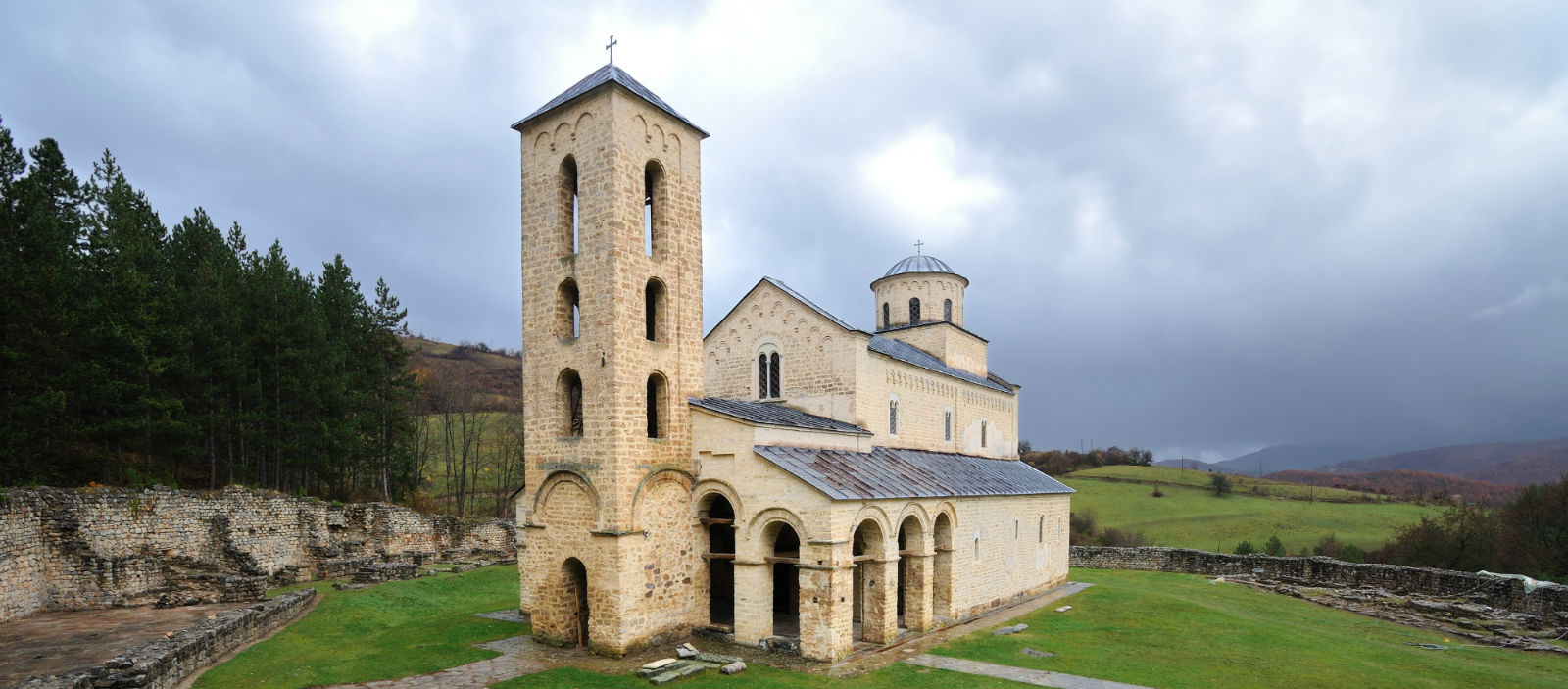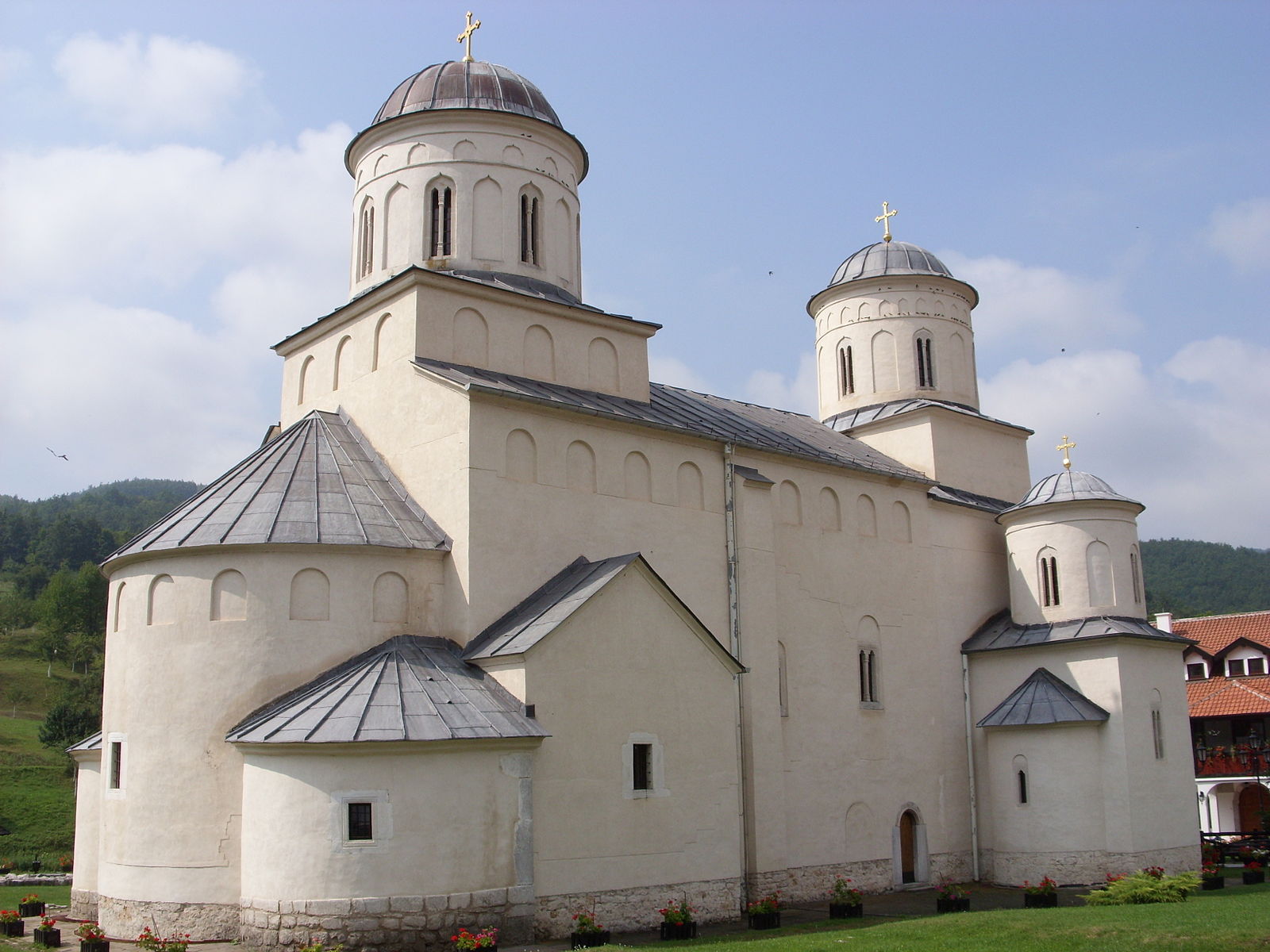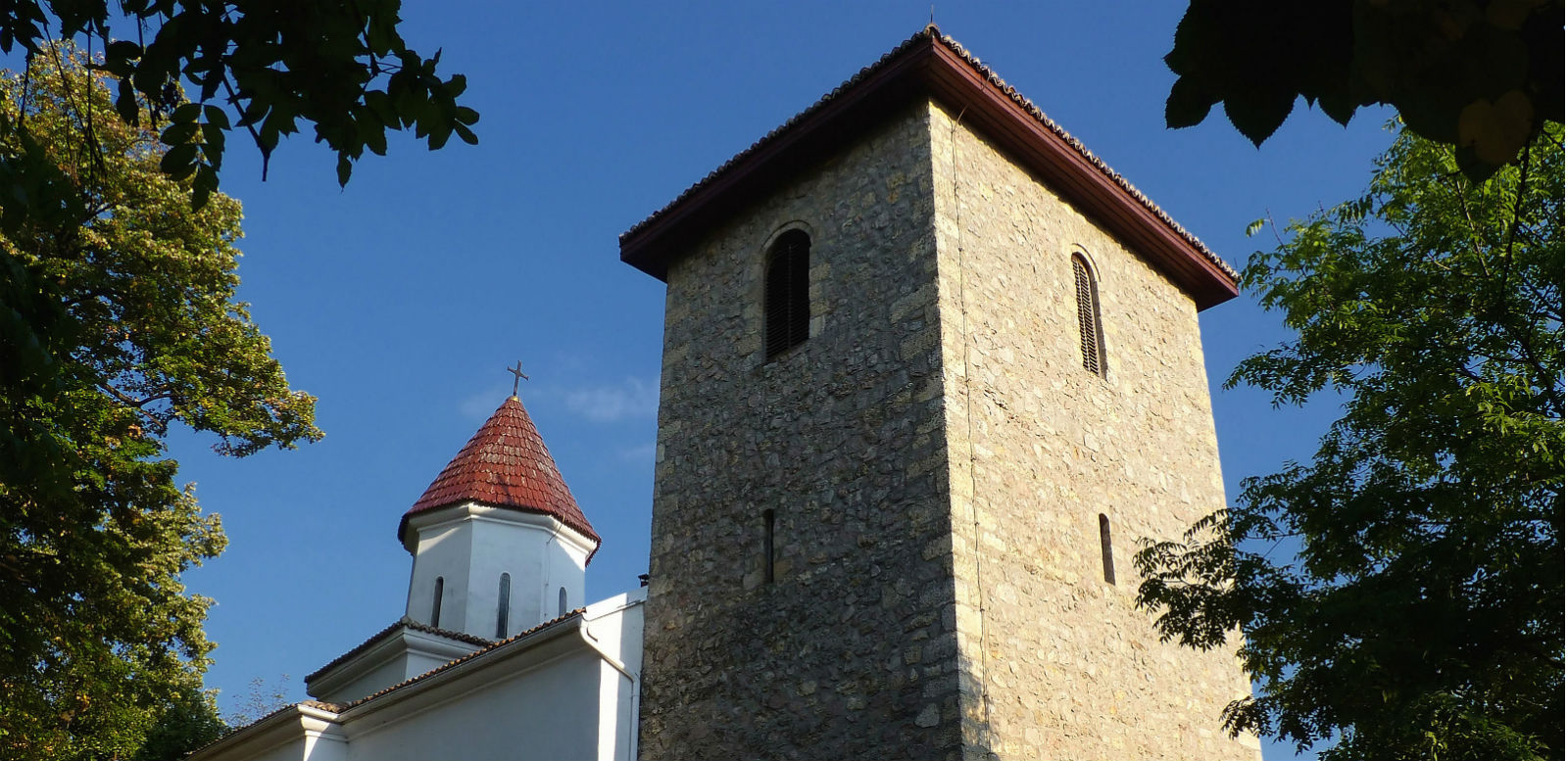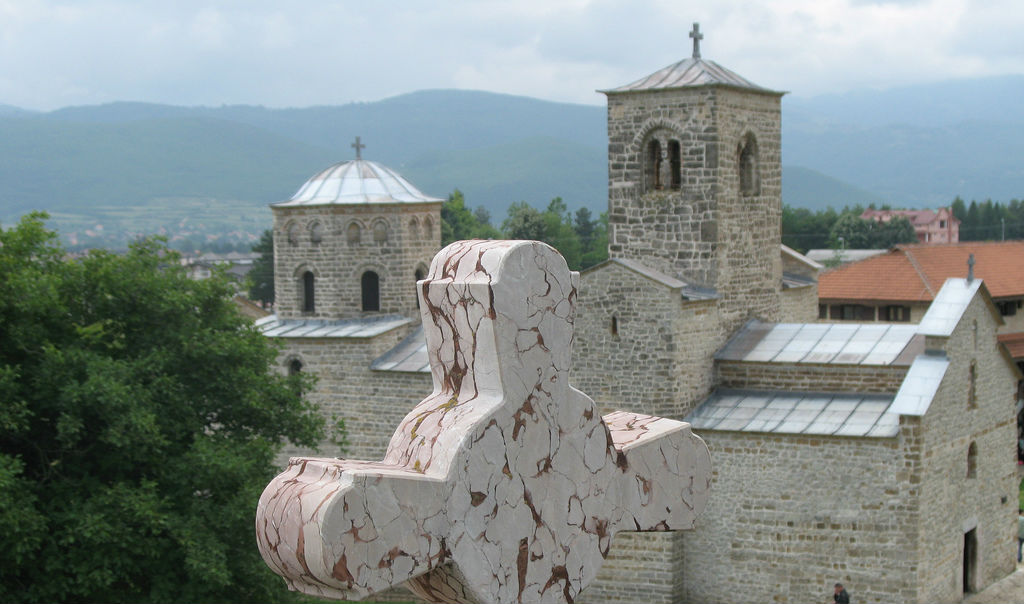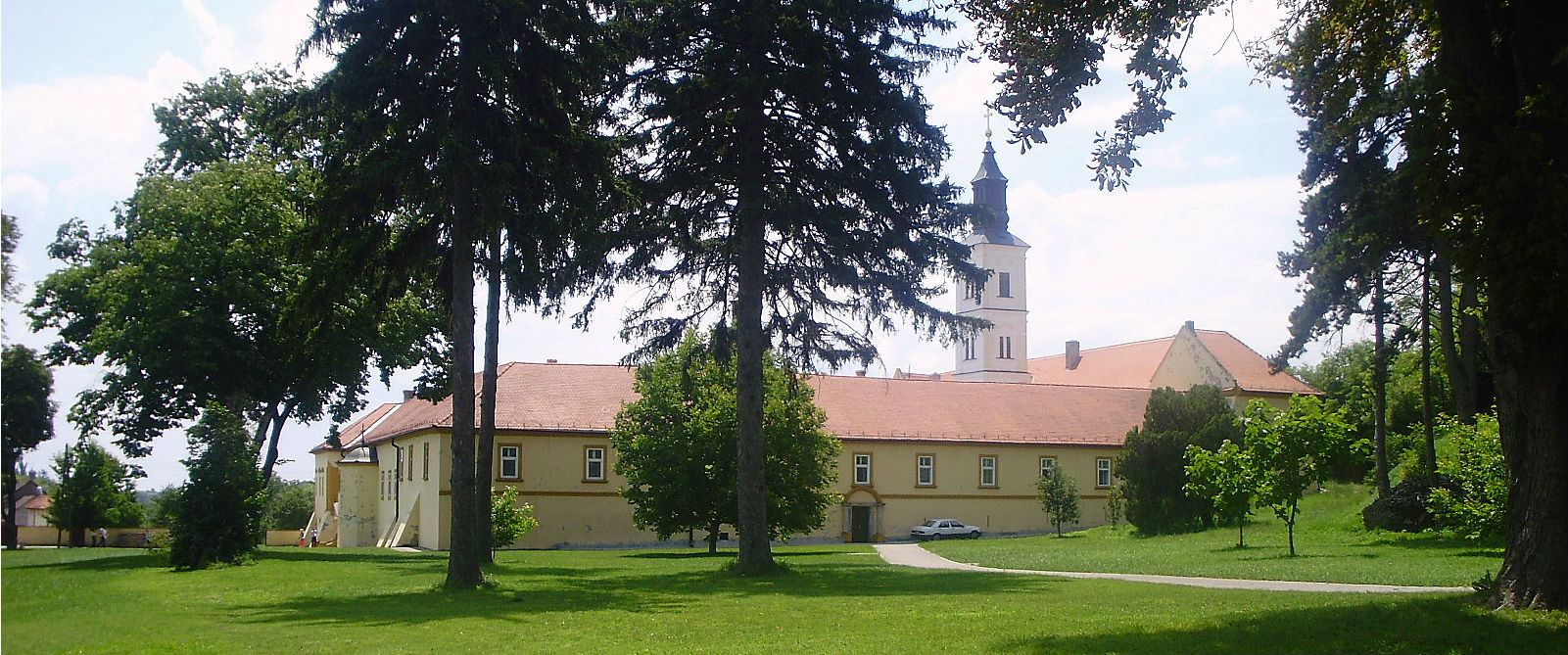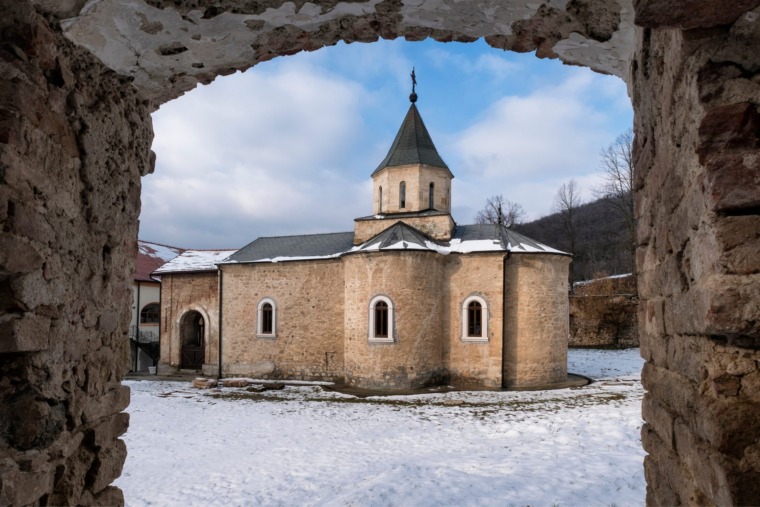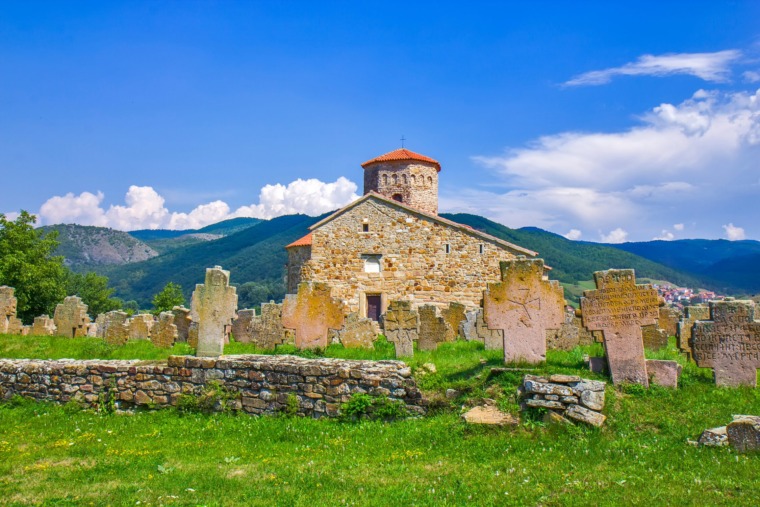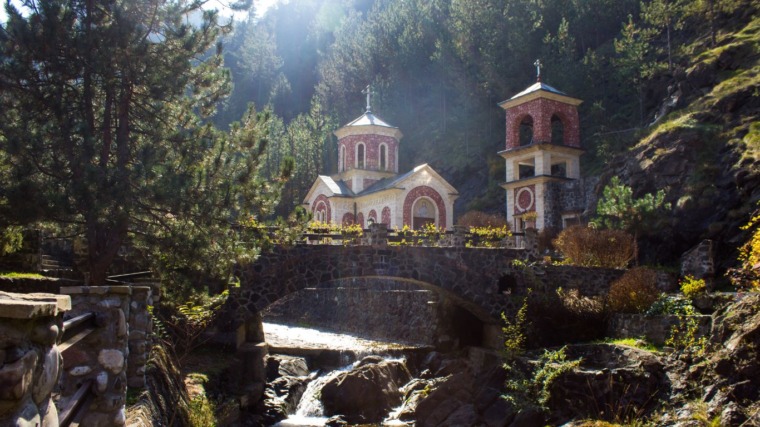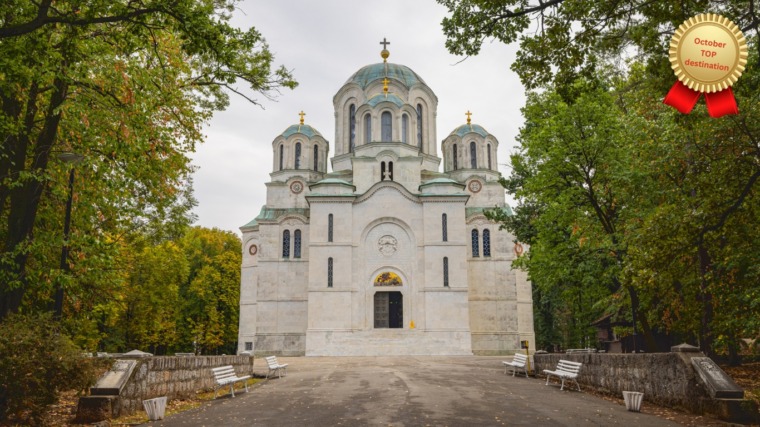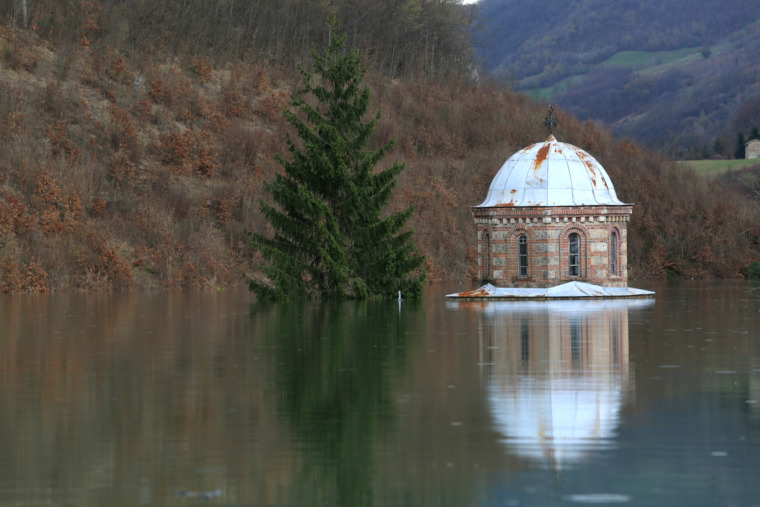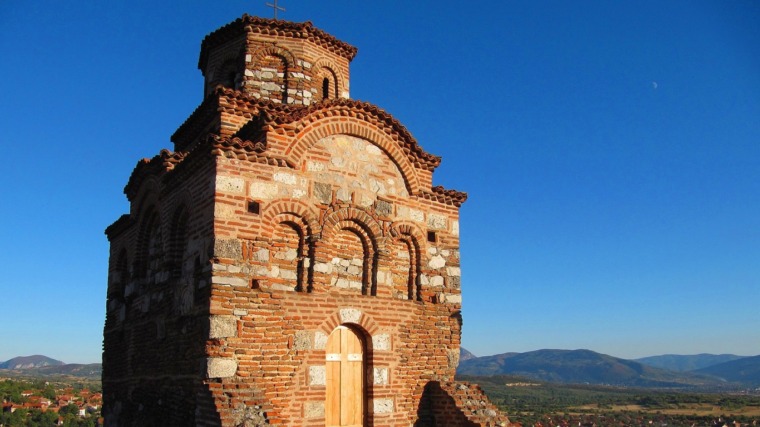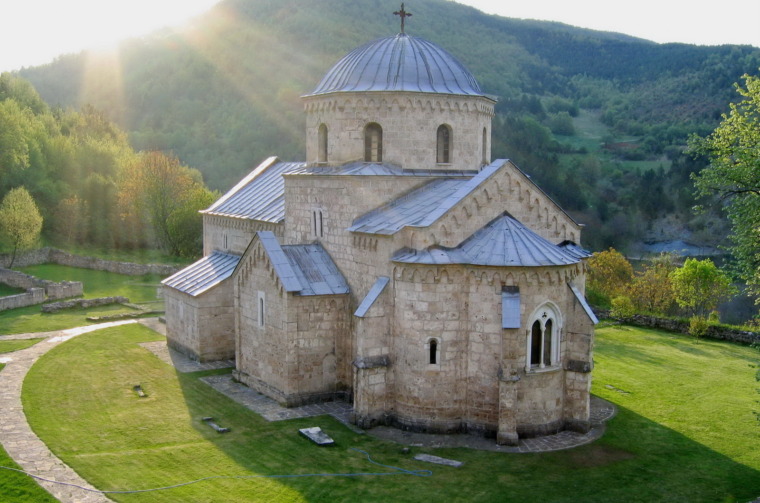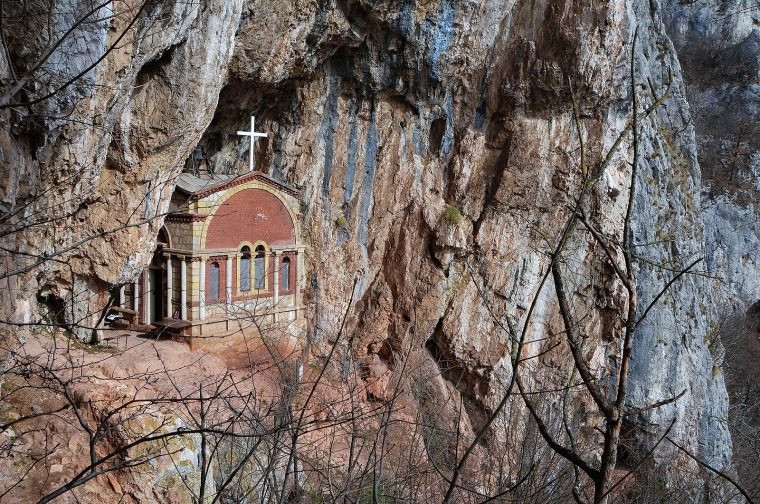Frescoes of the Sopoćani monastery, which was named after the old Slavic word for spring, are world famous masterpieces of art.
The Sopoćani Monastery, dedicated to the Holy Trinity, is an endowment of Serbian king Stefan Uroš I (1243-12769. The monastery was built near the source of the river Raška, 17 kilometers from the town of Novi Pazar. The endowment of the third son of King Stefan Prvovenčani surpasses all others with its beauty and grandeur.
The frescoes in the monastery are a true masterpiece of art that have brought international fame to the Sopoćani monastery. Today this is one of the most important cultural monuments that was included in the UNESCO World Heritage List in 1979.
It can’t be said with certainty when the monastery was built but it was probably around the year of 1260. These conclusions were made based on the fact that the frescoes were painted in the 60-ties of the 13th century.
The Sopoćani monastery represents an exceptional example of the Raška school. It was named after the Old Slavic word “sopot” which means “spring”. The church has a form of the Romanesque three-nave basilica with a massive semicircular apse in the central part of the nave.
The church also has a tall bell tower. The facade was covered with fresco-plaster, and then decorated with ornaments in white, ocher and rouge color. The facade got destroyed during centuries.
The interior of the church is decorated with colored stucco ornaments. Frescoes in the Sopoćani are substantially preserved thanks to their quality and they represent some of the greatest achievements of the monumental wall painting in Serbia. The most significant frescoes are located in the central part of the church – altar, the nave and the narthex.
The most famous fresco is the Dormition of the Virgin that covers over 30 square meters and it is located in the central nave of the church. The Virgin, surrounded by Christ, angels, apostles, bishops and many of the heroes with their heads down, occupies the central part of the composition.

Frescoes representing the life of Saint Simeon ie. Grand prince Stefan Nemanja, the founder of the Serbian medieval Nemanjić dynasty, also have extraordinary historical and artistic significance.
These frescoes include compositions of his death and transfer of relics to the Studenica monastery. A large number of frescoes have survived despite being neglected for a long time, only the golden leaves covering the frescoes were destroyed.
King Stefan Uroš I wasn’t buried here right after his death. In 1276 he was overthrown by his eldest son Dragutin, after which Uroš took the monastic and retired to the monastery in Hum. After the year 1282 and King Milutin coming to the throne, the relics of Uroš were transferred to the monastery.
The Sopoćani monastery was abandoned after Turks destroyed it and were left in ruins for more than two and a half centuries. The monastery was renovated in the early 20th century, only to suffer new devastations in the World War II. The conservatory work and restorations of this jewel of medieval architecture were initiated after the war and are still ongoing.
How to get to the Sopoćani monastery?
The Sopoćani monastery is located in central Serbia, next to Novi Pazar which is 290km from Belgrade.
If you are coming by car from Belgrade, the best road to take is over the Ibar roadway which goes towards Podgorica, over Lazarevac, Preljina, Kraljevo and Raška.
Sopoćani are on a hill, 10 km west from a city which also has remains of the old city Ras, Djurdjevi Stupovi Monastery and the Church of Saint Apostles Peter and Paul.
When you are already here, don’t miss…
The Church of Saint Apostles Peter and Paul, which is also protected by UNESCO and it’s at the beginning of the road to Djurdjevi Stupovi, in the foothill only 2km from Novi Pazar.
Walk around Novi Pazar and feel the mix of east and west, of Christianity and Islam… Don’t leave out the old bazaar and the Novopazar fort from the 15th century within it. The monuments of Islamic cultural heritage: Altun-Alem Mosque, built in the first half of the 16th century, as well as Ahmed Vojvoda mosque– one of the oldest structures in Novi Pazar which hails from the same period.
Besides the cultural monuments, the environment around Novi Pazar is known for its perfect nature. Because of this, don’t miss going to the Uvac canyon – “the Serbian Colorado”, located within the natural preserve of Uvac, in Pešter plateau, when you head to Sjenica.
If you go in the other direction and pass through Raška, you come to Kopaonik, one of the most beautiful and most visited mountains of Serbia, which both in the winter and summer provides different opportunities for a quality vacation and a fun experience, and in the winter it provides ideal conditions for snow sports.
Only 32 km from Novi Pazar is located Golija – the mountain tourist center, which is with modernized ski slopes but also wide glades for walks and hiking.

